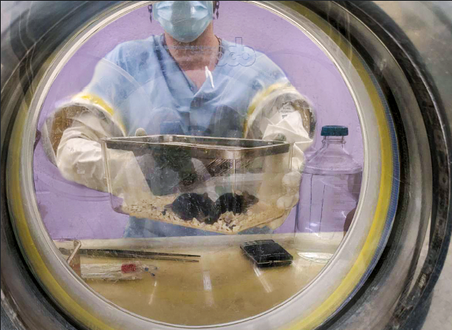The Gnotobiotics Facility supports research focused on the role of microbiota in cancer inflammation, pathogenesis, and response to treatment. We specialize in raising germ-free (axenic) mice as well as mice with a defined microbiome (gnotobiotic).
Examining the role of microbes on cancer biology
The Gnotobiotics Facility assists research efforts aimed at benefiting human health. We examine the roles that specific microbes have on cancer biology and assess how they can be targeted to benefit patients.

Specialized technology and expertise

Dedicated support for all phases of study
Our capabilities and specializations
Germ-free animal colony management
Our facility has specialized equipment, such as flexible film isolators and biocontainment racks, to support the sterile conditions required for the maintenance of axenic and gnotobiotic mice.
-
Genetic, viral, or chemical disease induction in mouse models
-
Germ-free strain rederivation and colony expansion
-
Colony management for rodent line maintenance, expansion, and cohort production
-
Introduction of gnotophoric agents or known microbiota to generate gnotobiotic mice
-
Subcutaneous, intravenous, retroorbital, intraperitoneal, mammary fat pad, intracardiac, and intramuscular tumor cell implants
-
Broad spectrum of technical procedures, including certain ABSL2 methods




